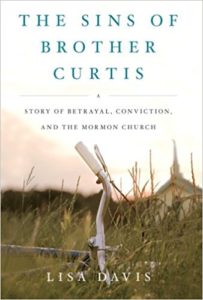We appreciate the efforts the Church makes to help victims of abuse. However, more help is needed, especially for victims of sexual abuse. Whenever leaders hold a victim responsible for being abused, they teach incorrect principles that protect perpetrators and harm survivors.
Each statement about sexual abuse in Church curricula should be evaluated to determine if it blames victims or if it holds the perpetrators responsible for the crime. The Church should revise any of its teachings that blame and shame victims of abuse. For example, consider the following statements:
The woman must resist an attacker “with all her strength and energy” or she is “guilty of unchastity.”– 1974 LDS First Presidency statement
Correct principle: A victim of sexual assault is not guilty of unchastity if she did not resist the attacker with all of her strength. Only the perpetrator is guilty.
“Think of it—unchastity is second only to murder. Perhaps there is a common element in those two things—unchastity and murder. Both have to do with life, which touches upon the highest of divine powers. Murder involves the wrongful taking of life; sexual transgression may involve the wrongful giving of life, or the wrongful tampering with the sacred fountains of life-giving power.”Elder Bruce C. Hafen, “The Gospel and Romantic Love,” adapted from a September 28, 1982, BYU devotional address.
Correct principle: Victims of sexual violence are not guilty of a crime like murder.
The loss of chastity is “far-reaching. Once given or taken or stolen it can never be regained.” … It is better to die in defending one’s virtue than to live having lost it without a struggle.” President Spencer W. Kimball, The Miracle of Forgiveness
Correct principle: A victim of sexual assault or rape does not lose his or her chastity or virtue.
“Your[young women] influence on the young men will help them remain worthy of their priesthood power, of temple covenants, and of serving a mission.” (See Guardians of Virtue, Elaine S. Dalton, April 2011 General Conference; and Be Not Moved, Elaine S. Dalton, April 2013 Young Women’s Conference)
Correct principle: Young men—not young women– are responsible for the choices they make. When young women are held responsible for the choices young men make, that results in victim blaming if they are raped.
“The body is something to be kept pure and holy. Do not be afraid of soiling its hands in honest labor. Do not be afraid of scars that may come in defending the truth or fighting for the right, but beware scars that spiritually disfigure, that come to you in activities you should not have undertaken, that befall you in places where you should not have gone” Jeffrey R. Holland, The New Era, February 2000.
Correct principle: The scars of sexual abuse do not spiritually disfigure a person; a sexual abuse survivor should never be blamed for the abuse by saying that she should not have undertaken an activity. The responsibility is solely that of the perpetrator.
“The victim must do all in his or her power to stop the abuse. Most often, the victim is innocent because of being disabled by fear or the power or authority of the offender. At some point in time, however, the Lord may prompt a victim to recognize a degree of responsibility for abuse” Richard G. Scott, General Conference, April 1992.
Correct principle: Victims have no degree of responsibility for abuse although perpetrators often believe that they do.
“Any sexual intimacy outside of the bonds of marriage—I mean any intentional contact with the sacred, private parts of another’s body, with or without clothing—is a sin and is forbidden by God. Elder Richard G. Scott, “Serious Questions, Serious Answers,” October 1994 general conference address.
Correct principle: Many victims of sexual assault have been groomed by perpetrators who coerced and manipulated them to engage in sexual activity. These victims are never responsible for the actions of a sexual perpetrator even though they may have had “intentional contact with the sacred, private parts of another person’s body.”
Church leader, teacher or speaker must eliminate all teachings that imply that victims are responsible for the sexual abuse they suffered and that they have lost their virtue. Leaders reading these statements may believe that they are responsible to determine the culpability of a victim who reports sexual abuse. In addition, they may choose to protect perpetrators.
The Church must review its teachings to make certain that they do not implicitly or explicitly hold victims responsible for being raped. The idea that one who is sexually abused is somehow responsible for being assaulted is just as flawed as if one were to say that a murder victim is responsible for being murdered or a robbery victim is responsible for being robbed.
Whenever a church leader writes or speaks about chastity or sexual purity, they must remember that many of those who read or hear their statements are survivors of sexual assault. Church leaders need to clarify their remarks so that their statements do not shame, blame or disparage abuse victims. Our Church must become a safe place for survivors to heal.
The following are some helpful teachings about sexual abuse in Church publications:
-
• “Victims of sexual abuse are not guilty of sin and do not need to repent. If you have been a victim of abuse, know that you are innocent and that God loves you.” [1]
• …In instances of abuse, the first responsibility of the Church is to help those who have been abused and to protect those who may be vulnerable to future abuse.” [2]
•“Church leaders should never disregard a report of abuse or counsel a member not to report criminal activity to law enforcement personnel. [3]•
• “Help survivors of abuse understand that they are not bad because bad things were done to them. Appropriately place responsibility on the perpetrator. Don’t imply that being abused was the victim’s fault. People do not have to repent of evil that was done to them; in fact, they cannot do so.” [4]
• “Victims of rape or sexual abuse frequently experience serious trauma and unnecessary feelings of guilt. Church officers should handle such cases with sensitivity and concern, reassuring such victims that they, as victims of the evil acts of others, are not guilty of sin, helping them to overcome feelings of guilt and to regain their self-esteem and their confidence in personal relationships.”[5]
•”What exactly is sexual abuse? By definition, it involves ‘any sexually stimulating activity between a child and an adult or another child who is in a position of power, trust, or control.[‘”6]
•”‘Perhaps [child abuse] has always been with us,’ says President Gordon B. Hinckley, first counselor in the First Presidency, ‘but has not received the attention it presently receives. I am glad there is a hue and cry going up against this terrible evil, too much of which is found among our own’.” [7]
Leaders need to consistently state that abuse victims are not responsible for their abuse and that the Lord loves them unconditionally and infinitely. Leaders need to mourn with abuse survivors and listen with love when they talk about their feelings. They need to help them, not harm them. The Church should be a place of healing for all of its members, including victims of abuse.
We pray that our Church will eliminate any incorrect statements about sexual abuse from its curricula and teachings. We ask that they seek to love abuse survivors as God loves them in all that they say and do. As they do so, they will walk in the Savior’s footsteps, who taught, “A new commandment I give unto you, That ye love one another; as I have loved you, that ye also love one another. By this shall all men know that you are my disciples, if you have love one to another.” [8]
1.For the Strength of the Youth, 36
2. (Book 1: Stake Presidencies and Bishoprics [1998], 157–58
3. Preventing and Responding to Abuse, Mormon Newsroom, March, 2018
4. Ann F Pritt, “Healing the Spiritual Wounds of Sexual Abuse,” April 2001 New Era
5. First Presidency letter to General Authorities, Regional Representatives, and other priesthood leadership, 7 February 1986
6. Child Abuse: Helps for Ecclesiastical Leaders, [Church pamphlet], 1985, 2
7. Lisa A. Johnson, “Hidden Agony,” New Era, March 1992
8. John 13: 34-35

